Sadly little has been written on the American “Pressed Fiber Helmet,” which actually was in service longer than other other helmet with the American military. While we’ve previously noted that this pattern helmet was produced by two companies – Hawley Products and International Hat Company – little of its history and variations have been chronicled.
While a definitive timeline is still very much a point of conjecture and speculation, this author has attempted to create a reasonable timeline of that follows the evolution of the helmets.
All helmets are part of the author’s personal collection
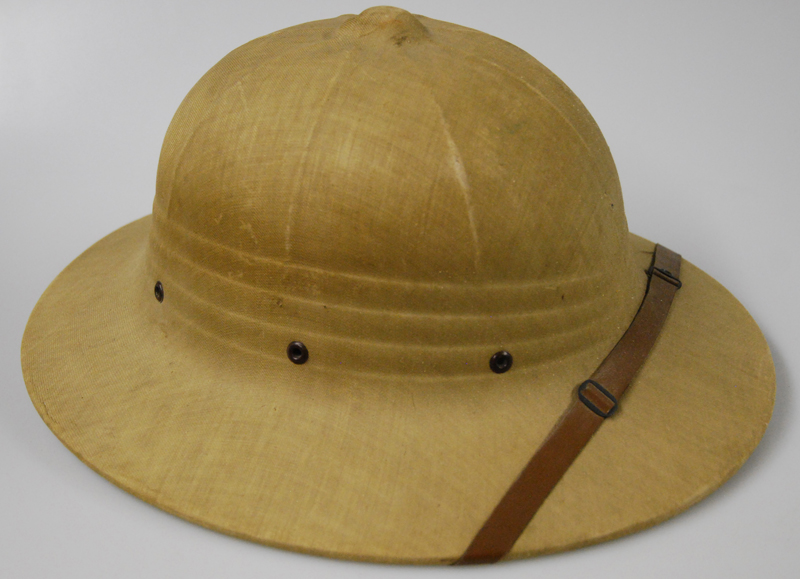
This early example of the Pressed Fiber Helmet was likely produced by Hawley Products for the civilian market and “pressed” into military service. It has a date inside written in pen from June 26, 1937 and according to the writing was used during a shooting competition at Camp Perry in Ohio.
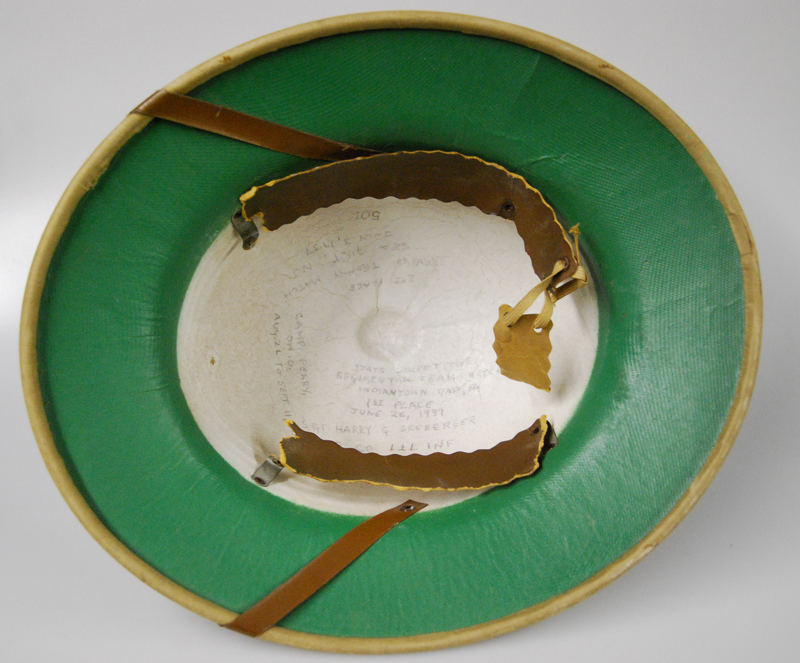
This helmet features only three grommets on each side. These apparently doubled as vents, while two on each side helmet the liner and the third on each side the chinstrap. This helmet appears to be a pressed material similar to polystyrene, but that wasn’t developed until 1941 so it is obviously a different (but similar) material. This is the earliest dating of this pattern of helmet encountered by this author.
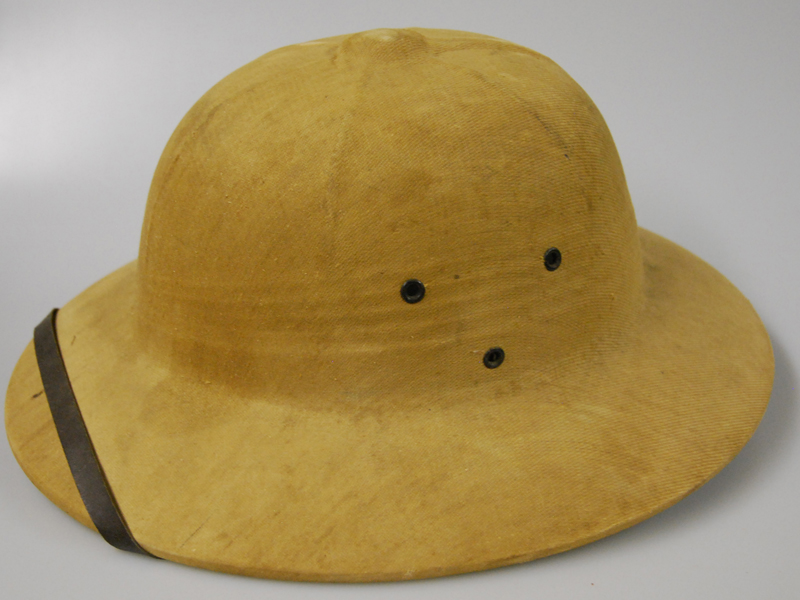
This “early” example also features only three grommets on each side, two to hold the liner and one for the chinstrap. This example has no stamps, so its exact origin is not known.
However this is the same pattern used by Hawley Canada, so perhaps it was an unissued Canadian made version. This pattern is also seen in South American examples, suggesting it could be an “export” product.
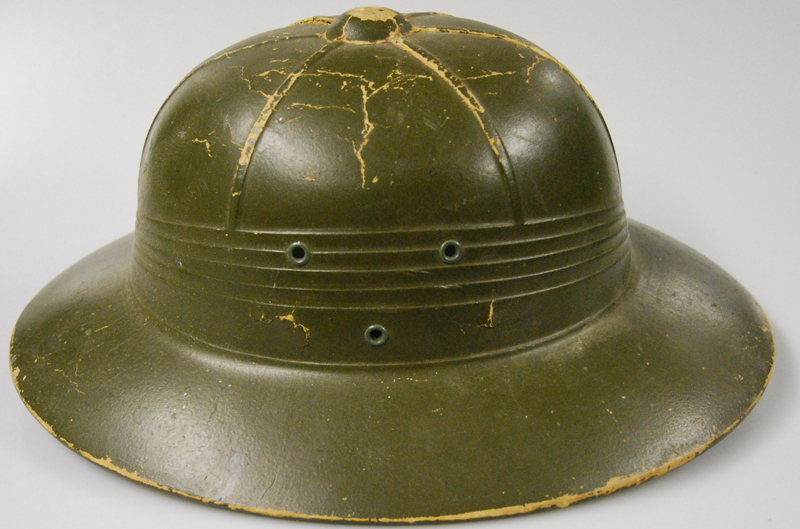
A possible “experimental” press fiber helmet that apparently was painted for use with the U.S. Army. It certainly seems to match the color of the M1 helmet.
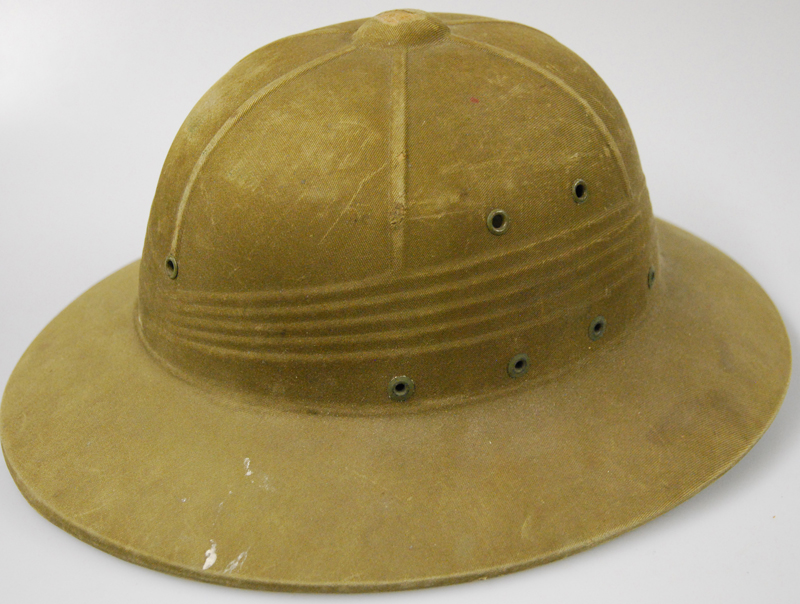
- An International Hat Company made pressed helmet. It has the same basic shape, but a close inspection shows a greater number of “folds” in the faux puggaree than the Hawley version.

A “classic” WWII era Hawley pressed fiber helmet with the USMC EGA on the front and complete leather chinstrap.
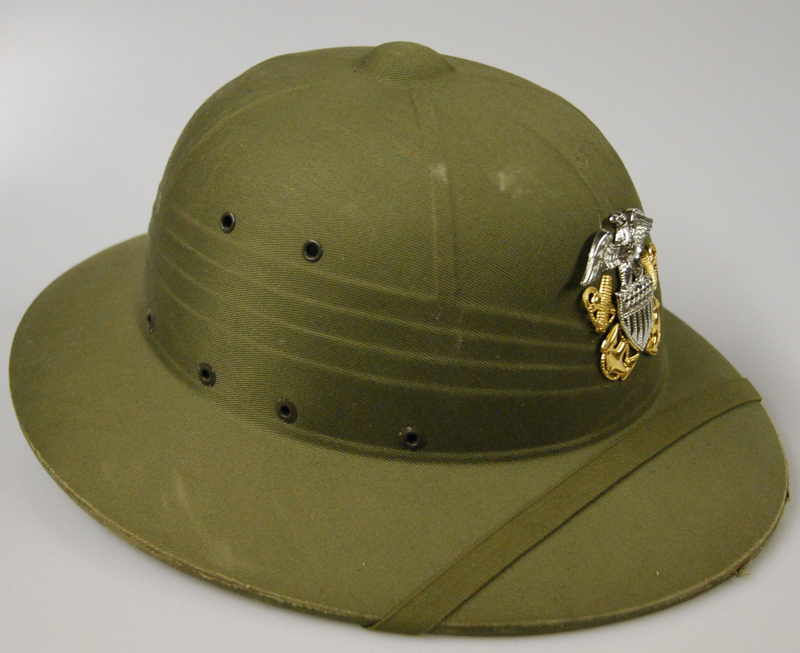
A later WWII era/post-War version by Hawley. It features the same grommets/vent placement as the International Hat Company version, but a close inspection shows the faux puggaree has less folds than the former version. This essentially remained the “pattern” from 1944 until the 1990s. This features four grommets at the bottom to support the liner, while the chinstrap is attached via hooks on the chinstrap.
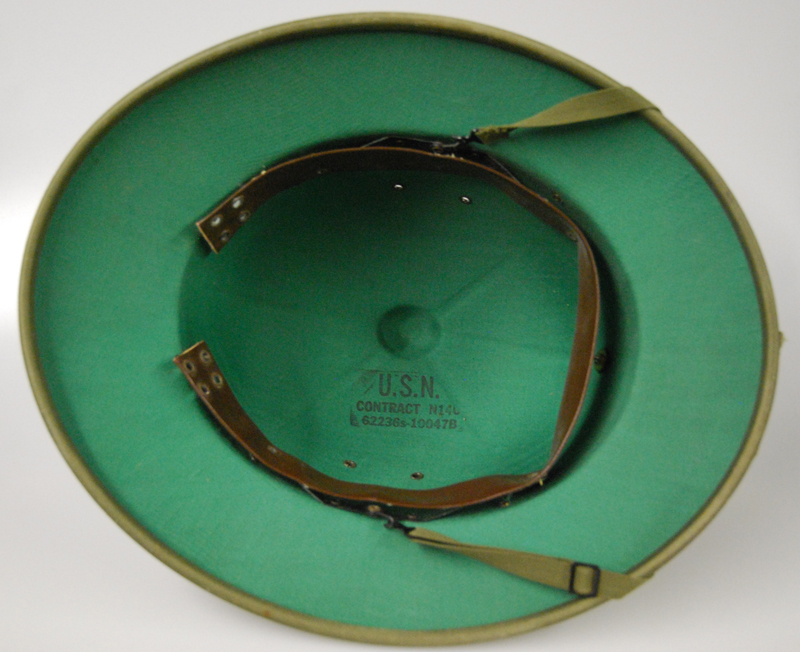
The chinstrap was changed from leather to an elastic material. These helmets appear to have been produced in a range of colors from tan/khaki to olive drab. This example is a later version used by the USN.
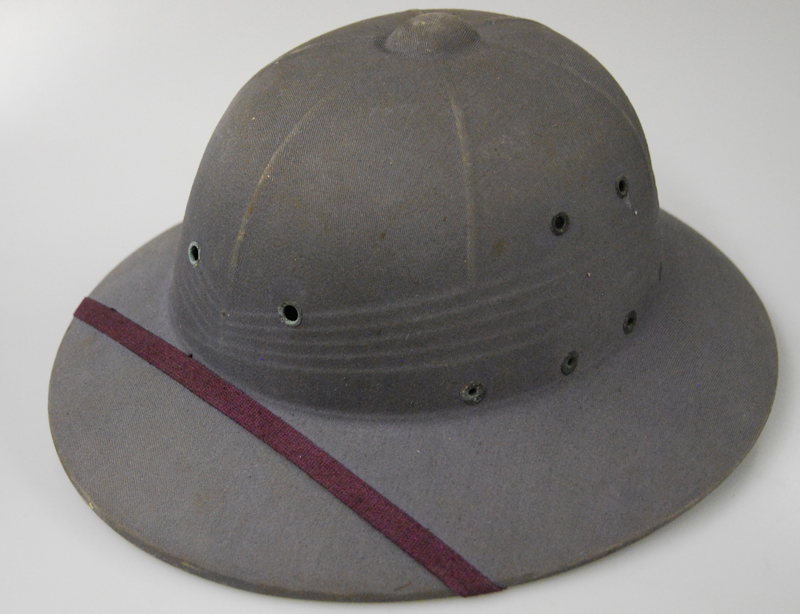
A gray version of the Hawley helmet that was reportedly considered for use by the US Navy in the 1980s. This example was apparently never adopted.

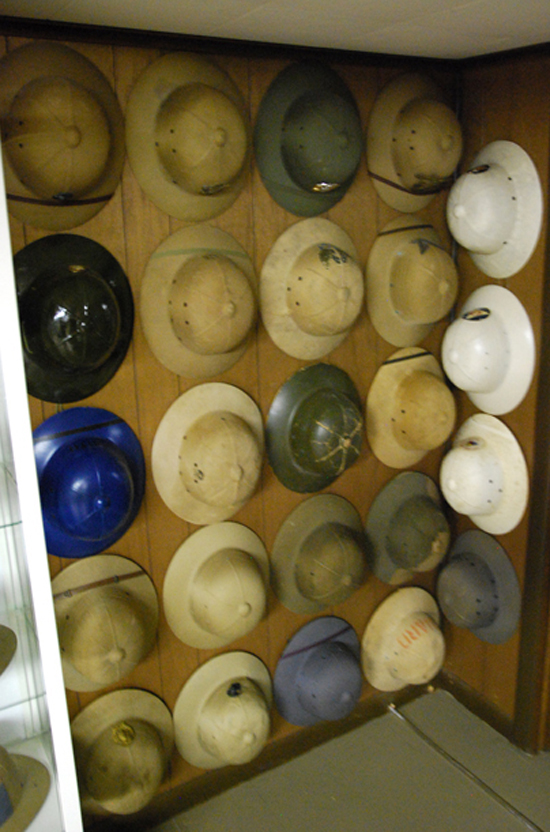
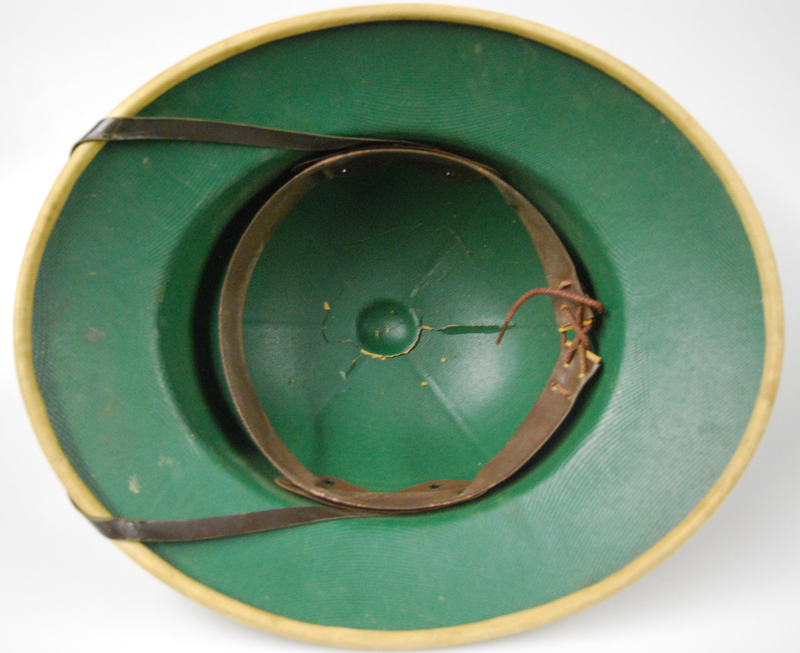
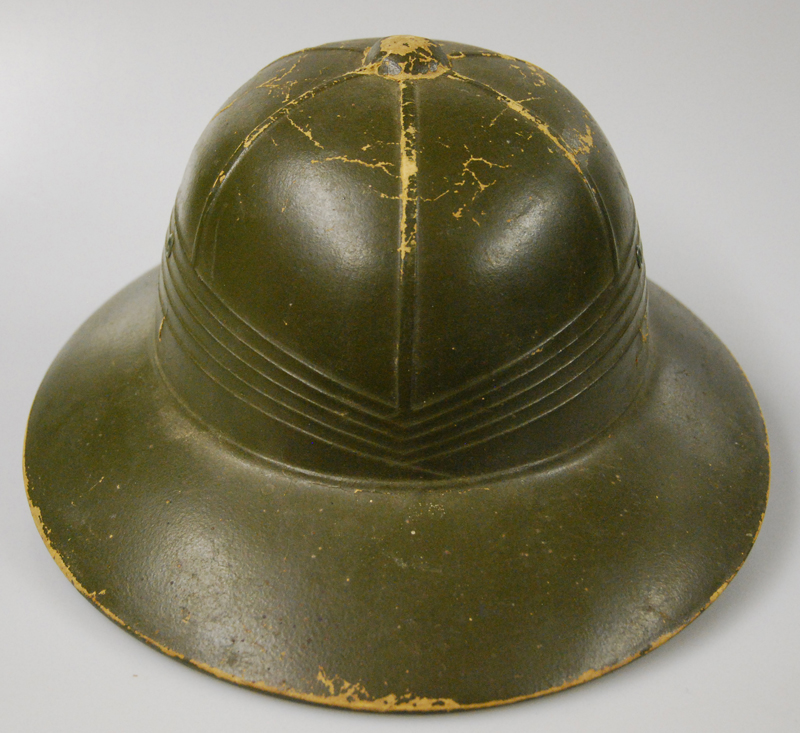
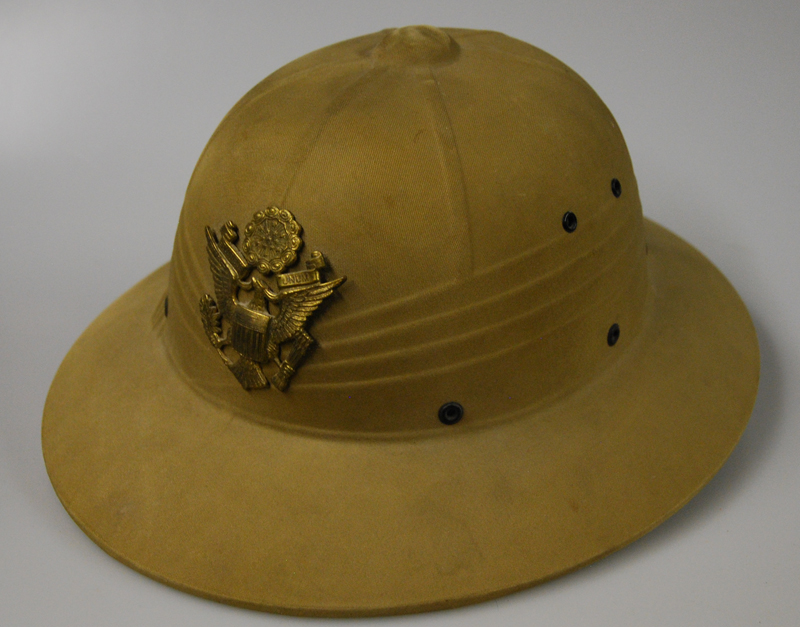
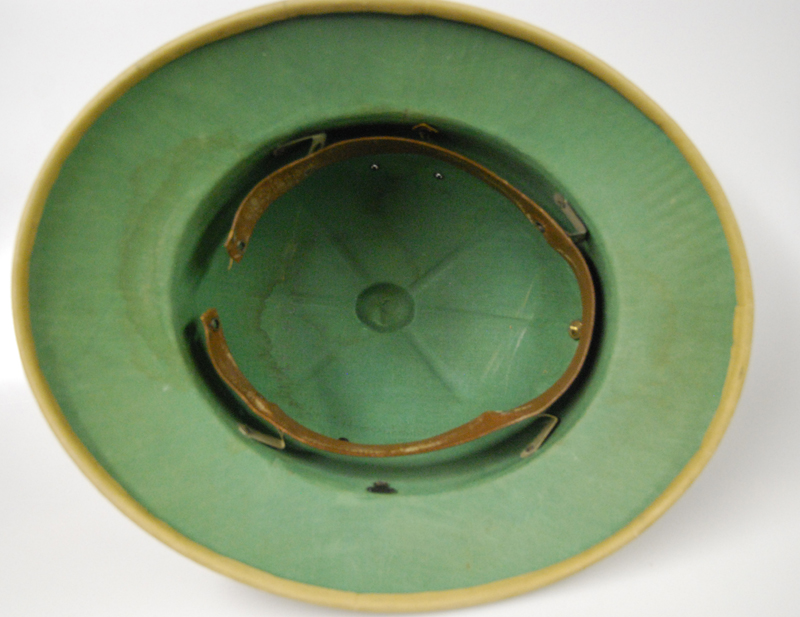
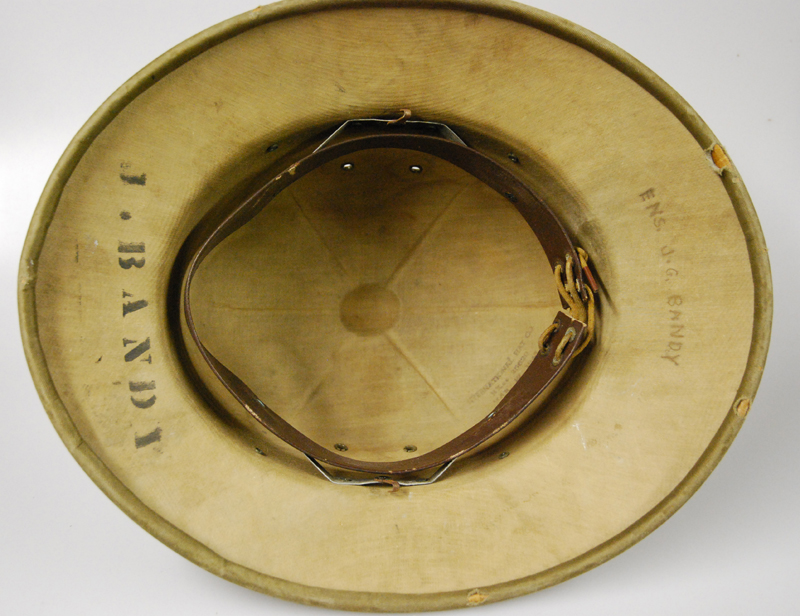
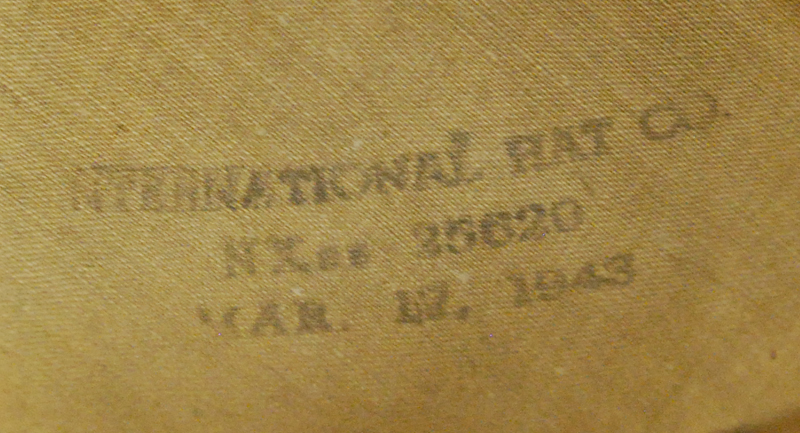
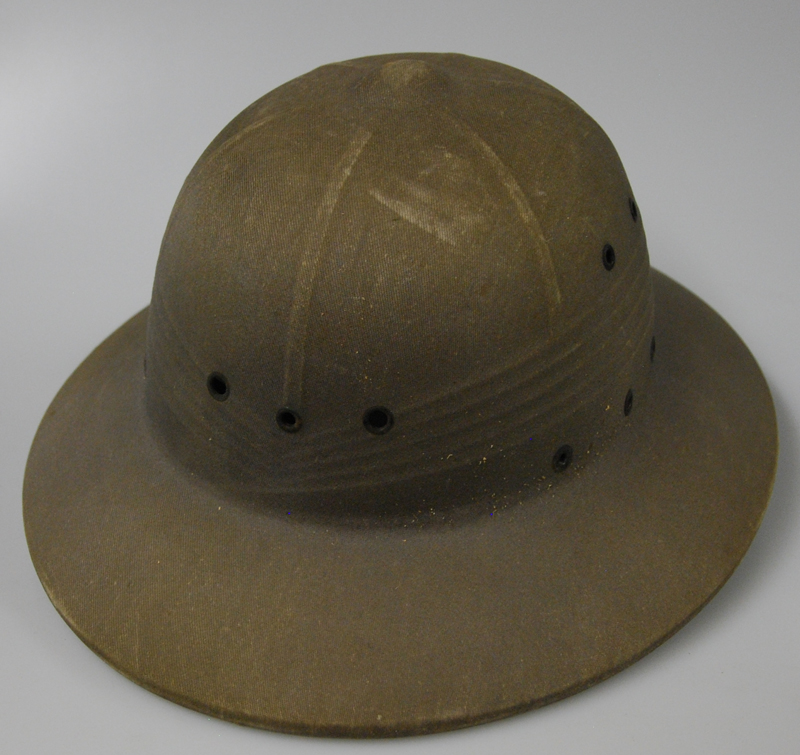
have you ever seen a helmet fiber liner that has the same kind of interior
Does any manufacturer still make the pressed fiber pith helmets just like the ones issued to the US Military during WWII thru Vietnam? I’ve seen recent photos of US Marine Rifle Range Coaches wearing sun helmets, but they seem to vary, some looking like the Rothco polyethylene versions with 3 grommets in the front, and some looking like the older pith style with cloth covering and Single grommet for the EGA on front.
I don’t believe the true pressed fiber helmets have been made since the 1970s – possibly in the 1980s. So any of the helmets are old stock. It is likely the polyethylene versions are now used.
I heard that to obtain optimum cooling effect in hot climes, the wearer would soak their pith helmet in water before wearing. The evaporation would cause a cooling effect on the wearer’s head, but would drip green streaks down their face and neck.
This is similar to infantrymen soaking their cloth canteen covers in water so the evaporation process keeps the water in the canteen cool.
This is a myth. This would damage the helmet as it would ruin the glues and wouldn’t cool anything. Perhaps it might help in a desert with low humidity, but in a jungle with high humidity the helmet would likely already get soaked from the wearer.